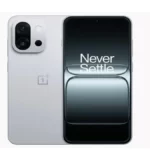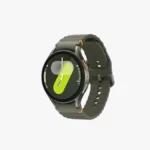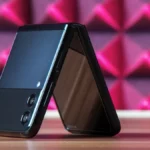Some product offerings have especially surprised us in our reviews regarding tough, portable, no-nonsense Bluetooth speakers. The fact that JBL’s Charge is currently in its fifth iteration is significant since it is one of the best examples. Anybody wishing for a strong portable sound from something about the size and weight of a wine bottle must pay notice. The result is a straightforward yet durable portable Bluetooth loudspeaker with sound quality competitive with the greatest waterproof speakers. It ultimately costs more than speakers, with even more excellent audio quality and additional functions. Find out if the JBL Charge 5 is still a good investment by reading our full JBL Charge 5 review.
The US audio expert argues that the new JBL Charge 5 is even more robust and has greater sound quality than the four Charges that came before it. The Charge 5 improves on the IPX7 classification of its forerunner by being completely dustproof and able to withstand being immersed in water up to a depth of 1.5 meters.
The newest improvement in the venerable Bluetooth speaker lineup is the JBL Charge 5. JBL tends to increase the Charge’s performance slightly. The Charge 5 streamlines several functionalities while making minor adjustments, particularly to the design. The classic design, which comes in eight colors and navy blue of our review model, has been updated to include a larger JBL logo and more rubberized support. Is the Charge still a good choice?
Pros
- Full melodies
- Dense bass
- Enough battery life
Cons
- Confined app
- Extra additions
Price and Availability
The JBL Charge 5 price is $179.95, and as a brand-new item, it’s unlikely that you’ll find it for any less. You can order it via Amazon, B&H, Best Buy, or straight from JBL.
The various color schemes that are offered are particularly noteworthy. There is a variant with a camouflage appearance in contrast to versions in solid hues, including black, red, teal, grey, and blue.
How Does it Look?
Comparable to the Charge 4, the Charge 5 underwent a considerable makeover. The JBL logo has seen the most major change and is now much larger, making it clear who created this speaker.
JBL modified the size and shape as well. Compared to Charge 4, it is shorter. Similar to the JBL Flip 5, the end caps that hold the active bass emitters are cut at a modest angle. As a result, the speaker gains more aesthetic flair, but if you wish to put it on one end rather than lay it flat, it will tilt much like the Tower of Pisa.
The Charge 5 is covered in mesh, just like the JBL Go 3, and features leather end caps, as with the previous iterations. Although having six color options is good, the Charge 4 had 12. Thus this is a step back.
There are controls for powering, Bluetooth, and audio up/down on the top. You can resume a track with the record button and skip to the next track by double-clicking it. The Party Boost button expands the sound by pairing two JBL loudspeakers in stereo mode or several speakers in party mode.
A USB-C port for the battery is situated on the back, and a rubber flap hides a USB-A port for charging other gadgets. At least JBL has maintained the Charge’s moniker feature across generations. However, the 3.5 mm extra connection is not included in the Charge 5.
A single light beneath the sizable JBL logo indicates the remaining battery life. It’s a stylish method to check how much battery life is left, but it’s not as simple to get an accurate reading as the Charge 4’s five lights. The light fades as the energy drops.
Is JBL Speaker Waterproof?
Yes, the JBL Charge 5 is a waterproof Bluetooth speakers. For each version, the Charge line’s durability has increased. The Charge 5 has an IP67 rating and is dust-resistant, in addition to being waterproof. This implies that you can immerse the speaker for up to 30 minutes in water up to 1 meter deep.
Sure, during the JBL Charge 5 review, it kept playing after submerging in a basin full of water. Jets of rainy weather or a brief shower won’t be dangerous
JBL Charge 5 Review on Sound Quality
For a small speaker, the Charge 5 produces excellent sound, with clear vocals and powerful bass. Compared to the Charge 4, it offers a more balanced sound, but the UE Megaboom 3 is still our favorite Bluetooth speaker for its fullness and width.
The vocals were audible well above guitar and synthesizers on Black Pumas’ “Flame,” while the horns went off as robust and vibrant. On The Weekend’s “Flash of light Lights,” the ominous bass and thunderous percussion were audible but didn’t overpower his vocals. Though the lyrics weren’t as prominent in the mix, both tracks ended up sounding richer and fuller on the Megaboom 3.
When listening to some songs, the contrasts between the two speakers were more apparent; while the singer’s vocals were more distinct on the Charge 5, the percussion guitars sounded considerably richer.
The JBL Charge 5 has a well-balanced tone at moderate to low volume. Surprisingly, the bass is powerful and deep for a loudspeaker with this sound. Bookshelf speakers with fewer bass than Charge 5 have been heard before. Up unless you start turning the volume up and up, the mids are crisp with singers given maintained, and the highs are tapered off for a softer appearance. The Charge 5’s maximum output was 94 dB, which is very loud but causes significant audio distortion. The noise vanished at a more tolerable 85 dB, yet it remained loud enough to be heard above party or highway noise.
The JBL Charge 5 and Charge 4 stream music at maximum volume without distortion. Above 60% loudness, compression sets in, bringing in harsh-sounding highs, and after this, the bass stops becoming louder, ending in a bright neutral balance. For the optimum sound quality, we advise maintaining the speaker at roughly 50 to 60 percent volume; when you go higher than this, there is probably too much background noise to consider sound quality as the first concern.
The Charge 5 is variable, just like the earlier Charge speakers, with its people on Twitter and woofers placed behind the speaker’s front. This implies that you shouldn’t anticipate something other than a 360-degree immersive sound like you could from the JBL Pulse 4.
Battery Capacity
JBL claims that the JBL Charge 5 battery life will feature a 20-hour battery life, identical to that of older models and the Megaboom 3. That is realistic enough; after 15 hours of using it, the battery had only around 25% of its original capacity.
Undoubtedly, the Charge series’ ability to work as a power supply for your phone is a crucial advantage. However, this uses almost the same batteries as the loudspeaker itself. Expect a shorter playtime if you employ the Charge 5 to charge additional devices.
Wireless Paired Up
Our phone and the Charge 5 are easily connected. When there were walls between our phone and the speaker inside, the signal was strong for up to roughly 50 feet. The JBL Charge 5 is simple to pair; all you need to do is touch and maintain the Bluetooth icon on the speaker’s front and choose it from your smartphone’s Bluetooth menu.
To monitor the Charge 5’s battery level and update the software, download the JBL Portable app. The app also controls Party Boost, which enables you to connect to a second JBL speaker in stereo or party mode. Party Boost worked with the Charge 5 and a Flip 5, but oddly not with a Charge 4.
You cannot alter the audio in any way in the app. There is no equalizer or pre-set stereo modes. You get the noise you hear when you open the box. Comparatively, the Boom & Megaboom app from UE provides a five-band equalizer with various settings and other functions, such as an alert and the option to create a one-touch playlist.
Final Verdict
JBL Charge 5 review shows it’s hard to beat a Music device. Apart from the ability to charge another gadget, it doesn’t have many bells and whistles, but it nevertheless produces powerful vocals and bass and can resist the conditions.
While the Megaboom 3’s list price of $199 is cheaper, UE’s speaker has been available for much longer and frequently sells for considerably less than the MSRP. Additionally, the Megaboom 3 is a superior all-around speaker regarding sound quality and features. The only function the Megaboom 3 lacks is that the Charge 5 has to charge another device

















